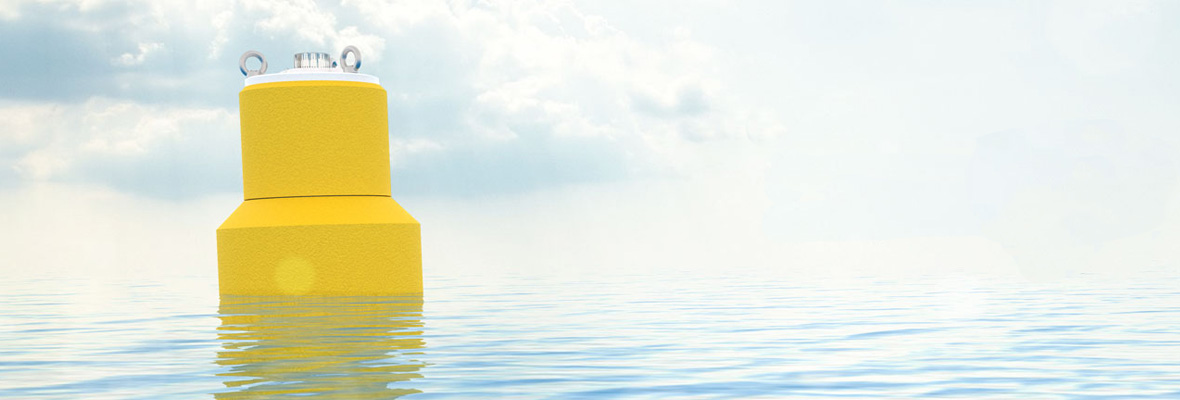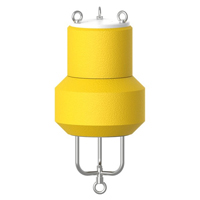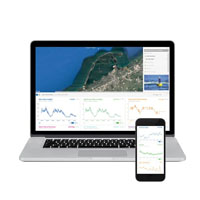During an emergency, every second it takes to mount a response matters—and may mean the difference between success and failure. Moreover, the ability to stay connected and monitor conditions despite inclement weather, power failures, and other challenges, means reliable wireless telemetry is essential.
In this post, we’ll cover the key features of emergency response buoys, and describe the ideal emergency response buoy setup. We’ll also distinguish between buoys that are right for emergency response plans and other rapid deployments.
Key Features of Emergency Response Buoys
The key features of emergency response buoys are dictated by the needs of typical emergency situations. Flooding is one of the most common emergent problems buoys can help warn against, and it happens in all 50 states. Whether caused by extreme weather, infrastructure failures, or other issues, flooding is particularly risky for low-lying areas with proximal water bodies.
But flooding varies significantly in its duration and speed. For example, a flash flood can happen without much warning or any warning at all, especially when infrastructure fails or during a rainy season. Or, during an extreme coastal storm, a surge of water might flood a normally dry area, causing industrial spills and other problems. On the other hand, a slow-onset flood might be building for weeks as the weather changes and a local watershed gets filled to capacity.
All of these problems are linked to the need to watch, warn, and take action. This means that emergency response buoys must all share two key features: a small footprint to keep them easily and quickly deployed, and the ability to support wireless communication.
An Ideal Emergency Response Buoy Setup
For this kind of project, the NexSens CB-50 data buoy is an ideal choice. The CB-50 supports the X2-SDL data logger for real-time wireless communication to shore. The X2-SDL itself is configured with three sensor ports, including SDI-12, RS-485 and RS-232, so it can connect according to industry standard communication protocols. Cellular, radio-to-shore, and Iridium satellite communications are all available via the CB-50’s integrated antenna which is securely mounted beneath its tower.
If there’s no need for the data logger in your specific application, you may instead use the unit’s empty canister, located inside the buoy hull, for your own electronics. That space and your electronics are protected by a removable topside foam tower, which also features (3) 5/8” eyenuts that can be used to lift the unit. The tower also supports a solar marine light that has a one to three nautical mile range for maximum visibility.
Depending on the nature of the emergency you’re monitoring, you might need water quality data or something similar. If you do, the CB-50 features an optional instrument cage where multiparameter sondes, water quality sensors, depth sonar and other instruments can be mounted securely.
The CB-50 also features a small footprint, so it is easy to deploy. The buoy’s overall size is 20 inches in diameter along its outermost edge by 37.5 inches tall. A fully configured system generally weighs in at around 50 pounds.
At this size, the CB-50 is deployed quickly and easily from a small boat. Some NexSens customers have even deployed the CB-50 by dropping it from a helicopter near the water’s surface in areas that are not easily accessible by boat.
Furthermore, the unit runs on (16) D-cell alkaline batteries, so it can be ready to go at a moment’s notice. For all of these reasons, the CB-50 remains a popular and smart emergency response buoy option.
Selecting the Right Emergency Response Buoy
In many ways, the CB-50 from NexSens is similar to other similarly-sized buoys for rapid response, such as the NexSens CB-40. However, there are a few reasons why the CB-50 is best for emergency response deployments.
The most salient is that the CB-40 cannot be used for wireless telemetry, while the CB-50 can be outfitted with wireless communications when integrated with the X2-SDL data logger. Most short deployments don’t necessarily need wireless communications, but most emergency situations do.
However, to parse out which emergency response buoy is absolutely optimal for your fact pattern, contact the professional team at Fondriest and NexSens. Our deep bench of expertise is at your disposal, and we can help you select the best option for your application.
Equipment
The CB-50 data buoy is designed for quick deployment in emergency response situations including industrial spills and natural disasters.
WQData LIVE is a web-based project management service that allows users 24/7 instant access to data collected from remote telemetry systems.




0 comments